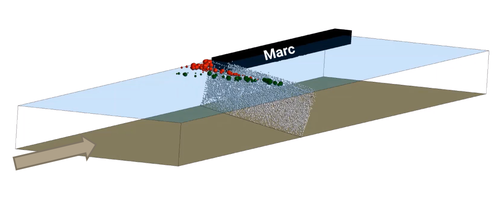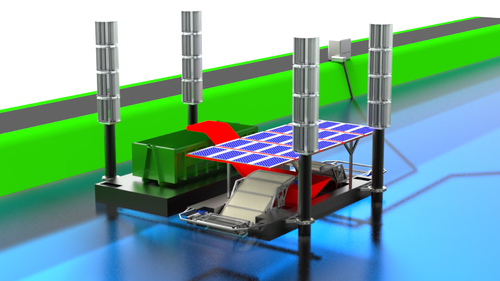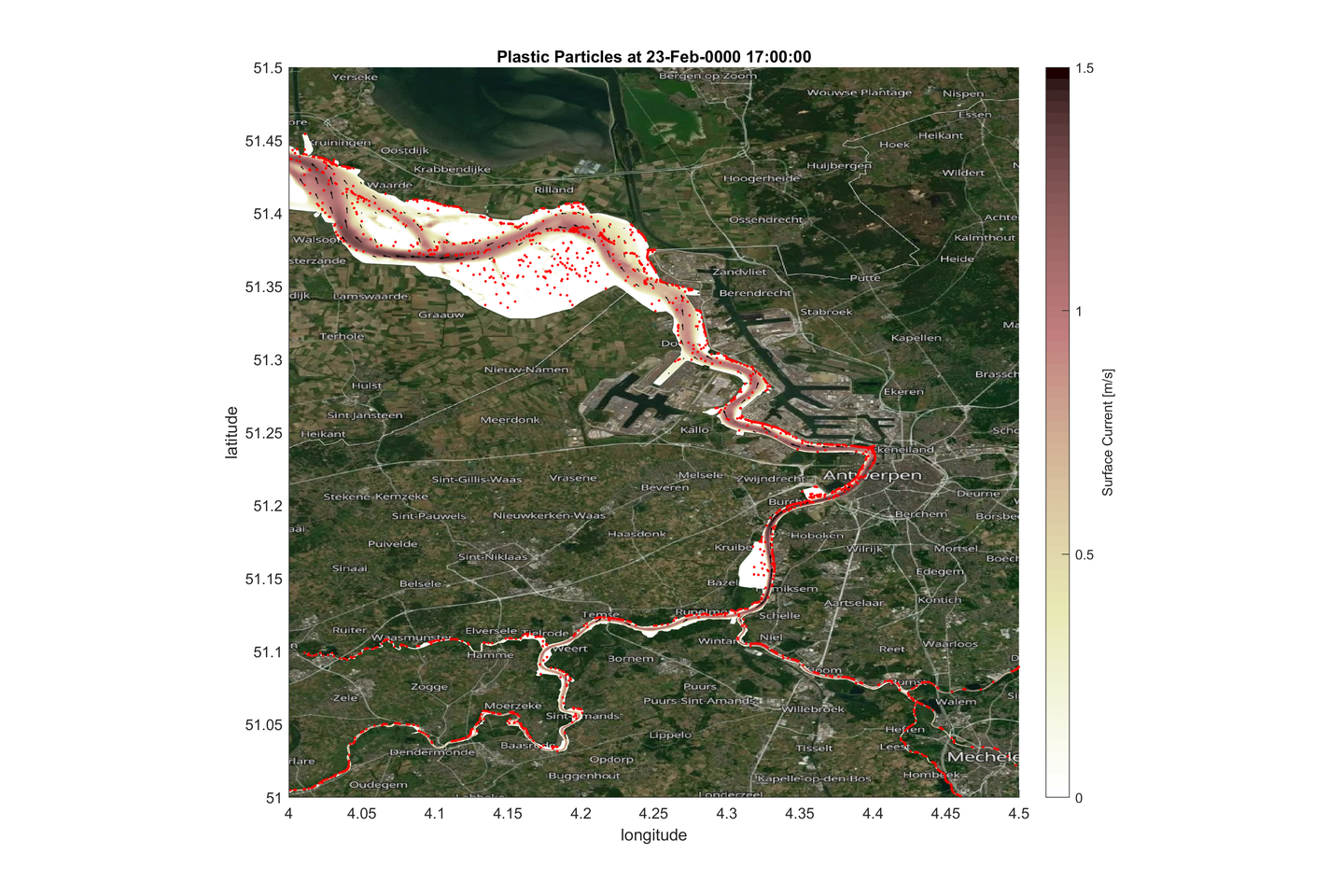
DeMARC - Design of a Marine And River Cleaner
IMDC, as part of an international consortium, contributed to the design of a Marine And River Cleaner (MARC). The cleaner uses a bubble curtain to guide the plastic waste to a collector device, without hampering navigation. The aim of the project is to develop a flexible design that can be adapted for optimal efficiency depending on the local conditions. This goal is achieved by developing a digital twin of the cleaner and its environment, based on 3D simulation models on different spatial scales.
 Within the consortium, IMDC conceived this R&D project on the design of a Marine And River Cleaner (MARC), based on a concept first designed by Multi Engineering. The generic design is developed in such a way that it can be optimised for each environment. The aim is to design a system that – via monitoring the incoming flux of plastics – can report on the achieved efficiency by calculating the percentage of incoming plastic items captured. IMDC contributed to this process by developing several 3D simulation models.
Within the consortium, IMDC conceived this R&D project on the design of a Marine And River Cleaner (MARC), based on a concept first designed by Multi Engineering. The generic design is developed in such a way that it can be optimised for each environment. The aim is to design a system that – via monitoring the incoming flux of plastics – can report on the achieved efficiency by calculating the percentage of incoming plastic items captured. IMDC contributed to this process by developing several 3D simulation models.  Two models were developed within IMDC, capable of reproducing the behaviour of plastics in water flows.: (1) A model for simulating large-scale plastics transport through rivers, ports and seas through a newly developed module for the TELEMAC-3D hydrodynamic modelling software. (2) A CFD model for simulating and optimising the efficiency of a bubble screen across a stream to guide litter towards the MARC cleaner. Both models have been validated using field data of plastic transport in tidal rivers and physical model test data of the behaviour of bubble curtains in crossflow. The knowledge gathered on the behaviour of floating plastics and bubble curtains will be used to (i) optimise the location of the cleaner in the aquatic system and (ii) find an efficient deployment of the bubble screen in terms of angle and airflow.
Two models were developed within IMDC, capable of reproducing the behaviour of plastics in water flows.: (1) A model for simulating large-scale plastics transport through rivers, ports and seas through a newly developed module for the TELEMAC-3D hydrodynamic modelling software. (2) A CFD model for simulating and optimising the efficiency of a bubble screen across a stream to guide litter towards the MARC cleaner. Both models have been validated using field data of plastic transport in tidal rivers and physical model test data of the behaviour of bubble curtains in crossflow. The knowledge gathered on the behaviour of floating plastics and bubble curtains will be used to (i) optimise the location of the cleaner in the aquatic system and (ii) find an efficient deployment of the bubble screen in terms of angle and airflow.IMDC’s consortium partners contributed by collecting experimental data on the behaviour of plastics in water, designing low-flow turbines to generate power for the system, by developing an inline microplastic sensor to mount to MARC, and by designing the actual platform and systems.
Figure showing the TELEMAC-3D Hydrodynamic model, able to model the plastic flow in the Schelde.


